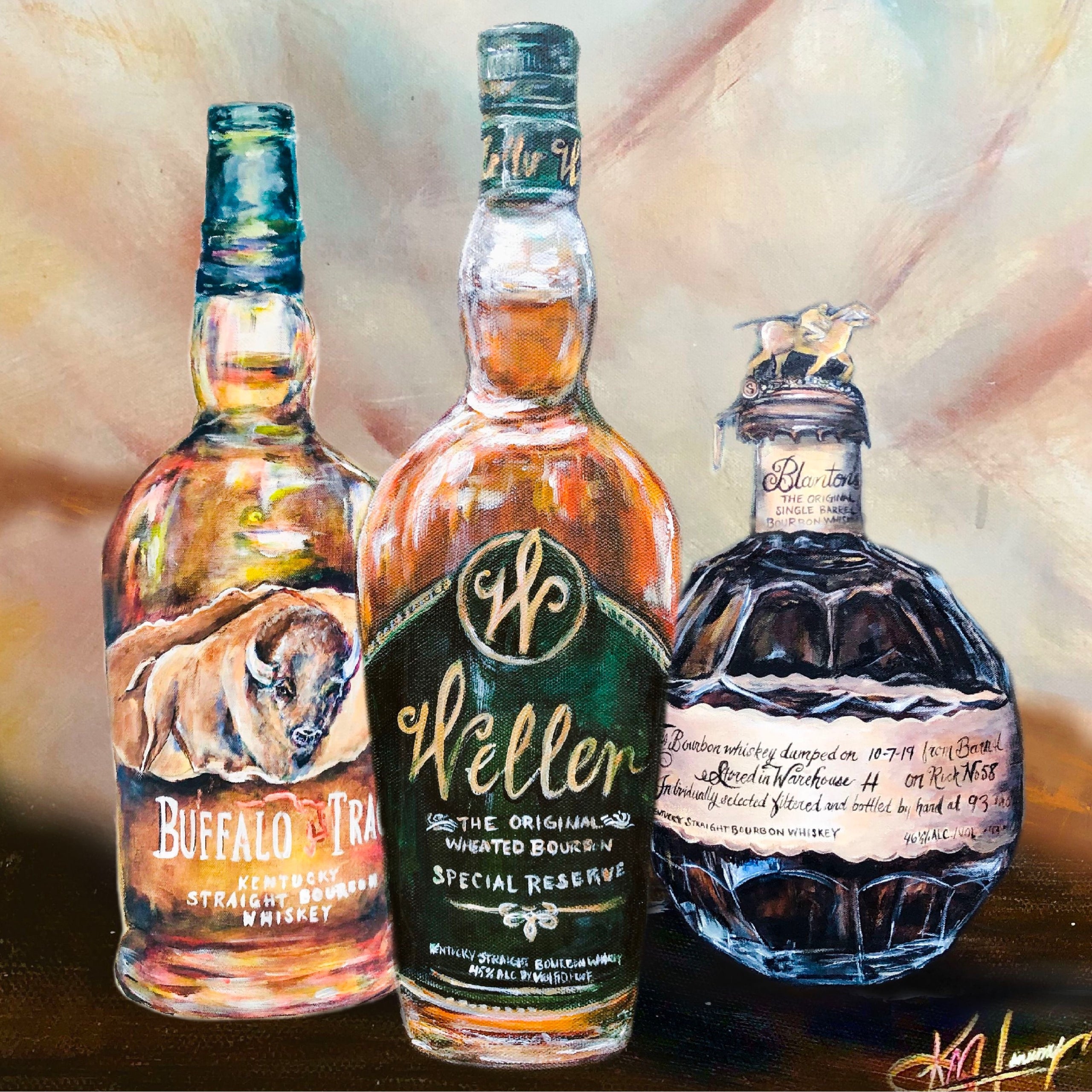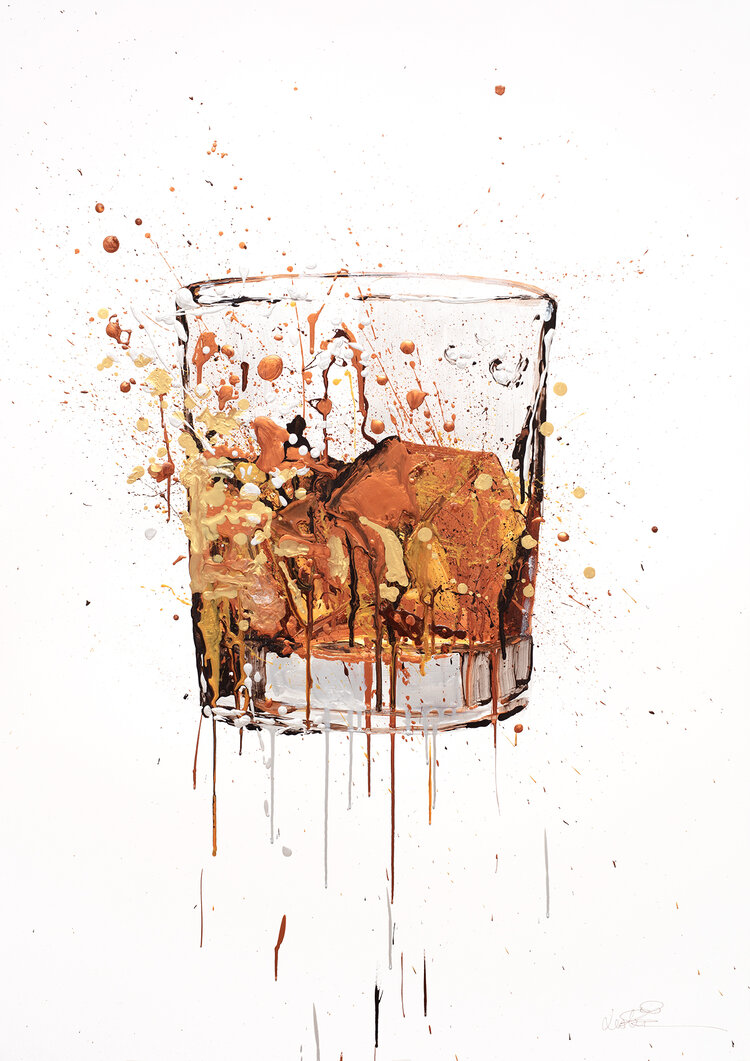Bourbon Art in Contemporary Culture: Where Practice Satisfies Advancement
Bourbon Art in Contemporary Culture: Where Practice Satisfies Advancement
Blog Article
The Relevance of Whiskey Art in Celebrating Heritage and Craftsmanship in the Beverage Industry
The intricate relationship in between bourbon art and the party of heritage and workmanship within the drink market can not be overstated. Through thoughtfully made tags and containers, whiskey brand names envelop their historic roots and the artisanal skills that define their manufacturing approaches. This imaginative dimension not only improves market charm but also works as an avenue for cultural storytelling, fostering a much deeper connection between the craft and the customer. As we explore the various elements of this topic, interesting questions concerning the effect of modern fads on typical methods arise, motivating additional evaluation.
The Historic Roots of Whiskey
At the heart of whiskey's appeal lies a rich tapestry of historic roots that map back to ancient people. The beginnings of scotch can be connected to the distillation methods of the Sumerians and Babylonians around 2000 BCE, where very early types of fermented grain drinks began to emerge. Nonetheless, it was in the Middle Ages that the art of purification developed dramatically, particularly in Ireland and Scotland, bring about the creation of scotch as we understand it today.
The term "whiskey" itself obtains from the Gaelic word "uisce beatha," suggesting "water of life." This phrase underscores the cultural relevance of bourbon in Celtic societies, where it was typically connected with routines, celebrations, and communal bonding. By the 15th century, distillation ended up being an identified craft within reclusive communities, paving the way for the establishment of legal distilleries.
As trade paths broadened, scotch's appeal expanded, going beyond local borders and recording the interest of connoisseurs worldwide. Whiskey Art. This historical journey reflects not only the craftsmanship behind whiskey production but also its essential role in cultural and social contexts, marking it as a significant beverage throughout background
Artistic Expression in Branding
Bourbon branding stands as an engaging junction of creativity and business, where visual identity plays an important function in shaping consumer perception. The looks of scotch labels, packaging, and marketing products mirror not just the brand's story yet likewise its core worths and heritage. Via imaginative expression, distilleries share a narrative that reverberates with consumers, evoking emotions and triggering links.
Using shade, typography, and images in branding serves to set apart products in a saturated market. As an example, typical themes might stimulate a sense of credibility and craftsmanship, while modern layouts can symbolize development and forward-thinking. This strategic creative instructions enhances brand name acknowledgment and loyalty, permitting consumers to create an individual connection with the bourbon they choose.
Additionally, artistic expression in branding typically offers as a celebration of regional heritage. Distilleries regularly incorporate regional icons or historical referrals into their styles, producing a local color that invites customers to take part in a broader cultural experience. Ultimately, the creativity behind bourbon branding not only enhances visual charm yet also enriches the general story of the brand name, fostering a deeper recognition for the workmanship and heritage ingrained in each container.
Craftsmanship in Container Design
The artistry apparent in bourbon branding extends beyond visual identity to include the workmanship associated with container layout. Each container her explanation acts as a vessel not simply for the spirit within, but likewise for the story it tells regarding its custom, origin, and high quality. The design procedure calls for meticulous attention to information, as components such as shape, closure, and material contribute substantially to the general assumption of the scotch.
Craftsmanship in bottle layout entails choosing top notch glass that can improve the scotch's color and quality, while likewise offering a tactile experience for the customer. The silhouette of the bottle must be both useful and cosmetically attractive, frequently reflecting the heritage of the brand name. Numerous distilleries opt for unique shapes or embossed logo designs that stimulate a sense of credibility and history.
Moreover, the tag design and typography play an important function in connecting the brand name's narrative. Bourbon Art. A well-crafted container not only astounds the customer's eye yet likewise strengthens the brand's dedication to high quality and custom. This way, the workmanship of bottle design comes to be a crucial element of the scotch experience, merging creativity with a profound respect for heritage
Social Importance of Bourbon Art
Celebrating practice and workmanship, the you can try these out social relevance of whiskey art transcends plain aesthetic appeals, intertwining with the social and historic stories of the areas where it originates. Each bottle works as a canvas, depicting the distinct tales, folklore, and customs that have actually formed local whiskey-making methods. The detailed designs commonly mirror the heritage of the distillers, incorporating signs and concepts that reverberate with the culture and values of their neighborhoods.
On top of that, scotch art plays a vital function in public gatherings and parties, serving as a concrete web link between people and their shared experiences. By valuing the artistry in scotch product packaging, consumers cultivate a much deeper understanding and regard for the craft, eventually improving their enjoyment of the beverage itself.
Modern Trends in Scotch Discussion
In recent years, the presentation of scotch has actually evolved to show modern preferences and trends while still honoring standard workmanship - Bourbon Art. Distilleries are progressively concentrating on visual elements that enhance the general alcohol consumption experience, linking the void in between heritage and modernity
Innovative bottle styles have actually arised, usually incorporating sustainable materials and artistic labels that tell compelling stories. Lots of brand names currently team up with neighborhood musicians, instilling their items with unique visual expressions that resonate with customers. Additionally, limited-edition launches are commonly packaged in collectible containers, adding worth and allure for lovers.

Final Thought
In conclusion, bourbon art offers as an essential conduit for expressing the heritage and workmanship intrinsic in the drink sector. Via intricate branding, cutting-edge container styles, and culturally substantial creative aspects, whiskey brand names properly honor their practices and attach with consumers.


Craftsmanship in bottle design involves selecting top notch glass that can boost the bourbon's shade and clearness, while also providing a tactile experience for the consumer. In this means, the workmanship of container style ends up being a crucial element of the bourbon experience, merging creativity with an extensive regard for heritage.
In conclusion, scotch art offers as an essential avenue for expressing the heritage and craftsmanship inherent in the drink sector.
Report this page